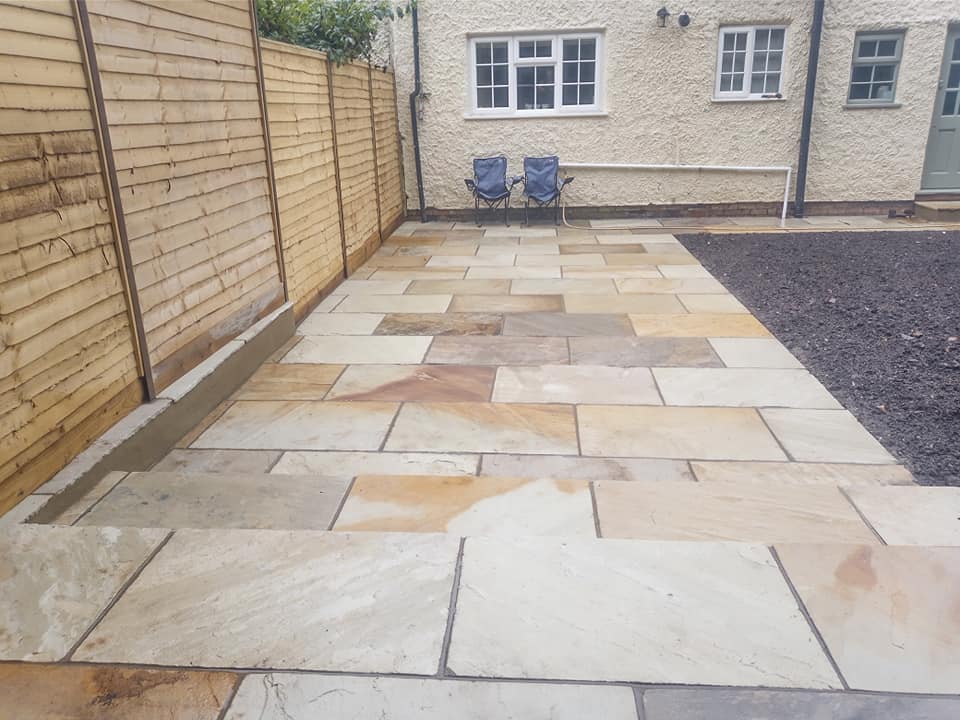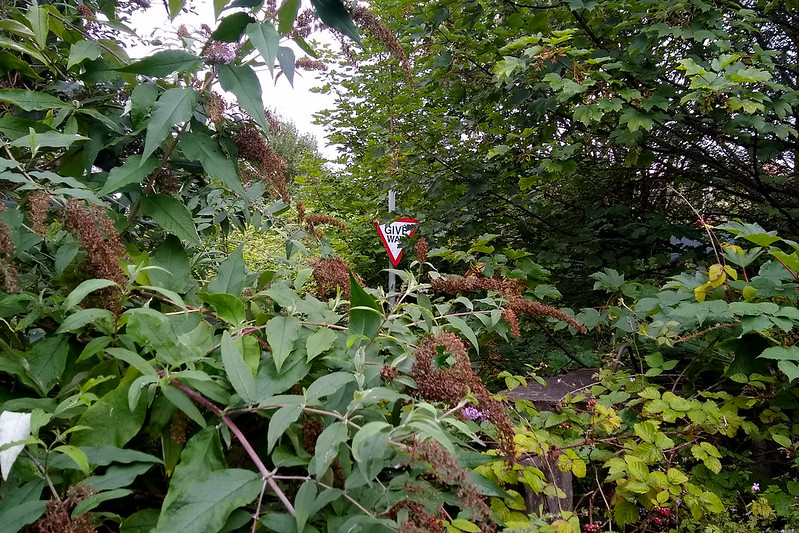|
This article contains affiliate links
Common Ivy is a widespread, evergreen, woodland, climbing plant, native to Europe and western Asia. The climber is extremely successful at colonising new environments and can be easily spread by birds.
The fruits are popular as they fruit in late winter when there is less food available. This results in ivy seeds being consumed by birds and distributed far and wide by avian droppings. Therefore Ivy seeds itself in the most opportunistic of places where they are difficult to irradiate. Behind sheds and along fence lines are just some of the problematic places it can germinate. Once established, Ivy crawls along at ground level putting down roots and looking for places to climb. When it finds a supportive host it will create a labyrinth of spiralling stems. Ivy is famous for its ability to completely engulf large trees and structures in this way.
The stems can form thick trunks with thousands of tendrils which attach to its host. However Ivy is not a parasite it does not feed off the tree it simply uses trees for their support.
Nonetheless Ivy can kill specimen trees, damage buildings and destroy garden fences. Therefore it is essential to get ivy under control before it gets established. In this article we will list the 12 main ways to get rid of Ivy from your garden for good. Digging
One of the best ways to get rid of ivy from your garden naturally is digging. If the ivy has created a consistent groundcover you will need to remove it a little at a time. You will need to loosen the ground with either a digging bar, mattock orfork. Then you will need to rake the roots out of the ground. It is good to cover the ground with sheeting as you work to stop new weeds from establishing. However the best way to dig out ivy is locate its source point.
This will generally consist of a thick stem where the runners connect to a root system. You will need to dig down deeply around the stump to dislodge it!
You can chop out lateral roots with a digging spade or bar. If the ground is particularly dry and hard add water to the hole and wait until it absorbs. Make sure you wear steel to cap boots, protective gloves and eye protection. If you want to find the best tools for the job visit our digging tools article here. Digging out ivy by hand successfully is an ongoing process. You will need to dig it out by the roots then monitor the area for new shoots. Create hard surfacingIvy loves to colonise bare ground and is quite capable of travelling distance to find a climbing host. The best way to prevent this is by installing surfaces it cannot cling to or colonise. The most effective surface for this is well built paving laid on a solid mortar bed on compacted hardcore. Patios and paving are some of the best surfaces to prevent the establishment of garden ivy. Replace old fences
Old timber fencing very much replicates ivy’s typical support system in nature. What makes this worse is birds regularly perch on fencing releasing droppings along the fence line. During spring droppings are typically full of ivy seeds. This creates the perfect scenario for ivy seedlings to evade hand weeding and quickly climb towards the sunlight. Once ivy becomes established along fence boundaries it is very difficult to eradicate. Old and degraded fences make it even easier for Ivy’s tendrils to latch on to. Consequently, the best way to get rid of ivy along an old fence line is to replace the old fence. This will give you the opportunity to dig out the roots from both boundaries. A new robust fence can then be installed in its place. Improve your soil
One of the reasons ivy can be so difficult to get rid of is it easily colonises tough ground. In its natural habitat of dense woodland Ivy has to grow in dry ground full tree roots. This means it is even more challenging to physically dig out. Therefore one of the best ways to remove ivy and keep it at bay is to improve your soil. Firstly you will need to dig out ivy's existing roots and turn over the soil. Then you will need to add large amounts of organic matter or compost to the soil. When your soil is in better condition you can establish effective ground covers such as lawn. If ivy seeds do germinate and become established they will be much easier to pull out. Prune overhanging vegetation
Ivy is a pioneering woodland plant and in its own environment can easily out-compete other plants. Therefore if your garden is already overgrown you are giving it a competitive advantage. This means it will have free reign to clamber over fences or even adjacent buildings. The best way to eliminate this problem is to prune away overhanging trees and shrubs. Allowing sunlight to fill up your garden once again will provide an overall better environment for other plants. Sheet mulching
Sheet mulching is a method of mulching where biodegradable sheet materials are laid underneath traditional mulching materials. This is to prevent more robust, perennial weeds establishing and slow the rate of mulch degradation. Typical examples of sheet mulch materials include cardboard and newspaper. If you have areas which are being colonised with ivy, dig them up and apply a sheet mulch. Not only can this stop ivy from establishing but it can help to invigorate the soil. White vinegar
White vinegar is generally toxic to plants and can draw moisture away from them. This is no less the case with ivy. You can mix 1 part white vinegar to 4 parts water and apply to leaves and to the roots. You must however make sure you are not affecting other nearby plants. Bear in mind, this method has mixed results and not suitable for very established ivy vines. However it can be used as a part of a multipronged approach to ivy control. Rock salt
Ivy has a serious dislike of rock salt especially when it comes into contact with its inner parts. If you have a stubborn Ivy plant which has a thick base rock salt can help to kill it. Saw the ivy plant off a couple of inches from the soil. Drill a wide hole vertically down into the stump and fill it with rock salt. It is important to seal the top of the stump with a robust tape and create a tight seal. This will draw moisture away from the crown and corrode the cells of the plant. Stump killer
Stump killer comes in a range of different products but all generally do the same job. These are more traditionally used on tree stumps but can also be used for ivy also. These come in granular form and accelerate the decomposition of the stump. Simply drill wide holes into the stem of an ivy plant and empty some inside the wholes. These treatments on the whole are not toxic but do read the label for extended information. Glyphosate
Glyphosate is a well known herbicide which can eliminate weeds and woody plants like ivy. If you are not a fan of chemicals this is probably not for you. Although there is no evidence glyphosate can harm people there is much debate on the subject. However it is a widely used herbicide with granulate stump treatments most effective for ivy removal. How to remove ivy from buildings
Very often ivy will climb up onto the facades of buildings and attach to masonry and concrete. Ivy is an expert of taking advantage of every nook and cranny. This can cause substantial damage to roofs, gutters and window frames and must be removed. However care must be taken when removing ivy from buildings. Simply pulling it away can fracture brickwork and break away roofing materials. Therefore it is always effective to start by removing the plant and its roots at ground level first. The ivy can then be left to die and dry out slowly. This will weaken its grip on the building for later removal in stages. How to remove ivy from trees
The most common dilemma for rogue ivy is removing it from the trunks of trees. Very often the ivy foliage is not that noticeable until it has become quite established. This can cause the slow death of a tree causing it to become a standing hazard. If you have ivy growing up a garden tree it is best to get rid of it as soon as possible. Cut the Ivy at the base of the tree and remove the roots. Then cut a section of the ivy higher up the tree at a distance of around 1 metre. Remove all the ivy stalks and trunks between the cuts. This will prevent any ivy from reattaching itself from the cut sections. Then you will have to monitor the tree and remove any dead sections of ivy gradually. Professional removal
If you have extensive issues with overgrown ivy it is good to seek professional help. Trying to remove ivy from heights and awkward places can be dangerous. If you doubt you will be able to undertake the work safely, always seek professional advice.
If you are considering removing ivy yourself check out our essential tool guide for garden clearances here.
'As an amazon associate I earn from qualifying purchases'
0 Comments
Leave a Reply. |
The Author
|
Landscaping services across Buckinghamshire, Amersham, Aylesbury & High Wycombe
Hyde Heath, Amersham, Buckinghamshire |
|















